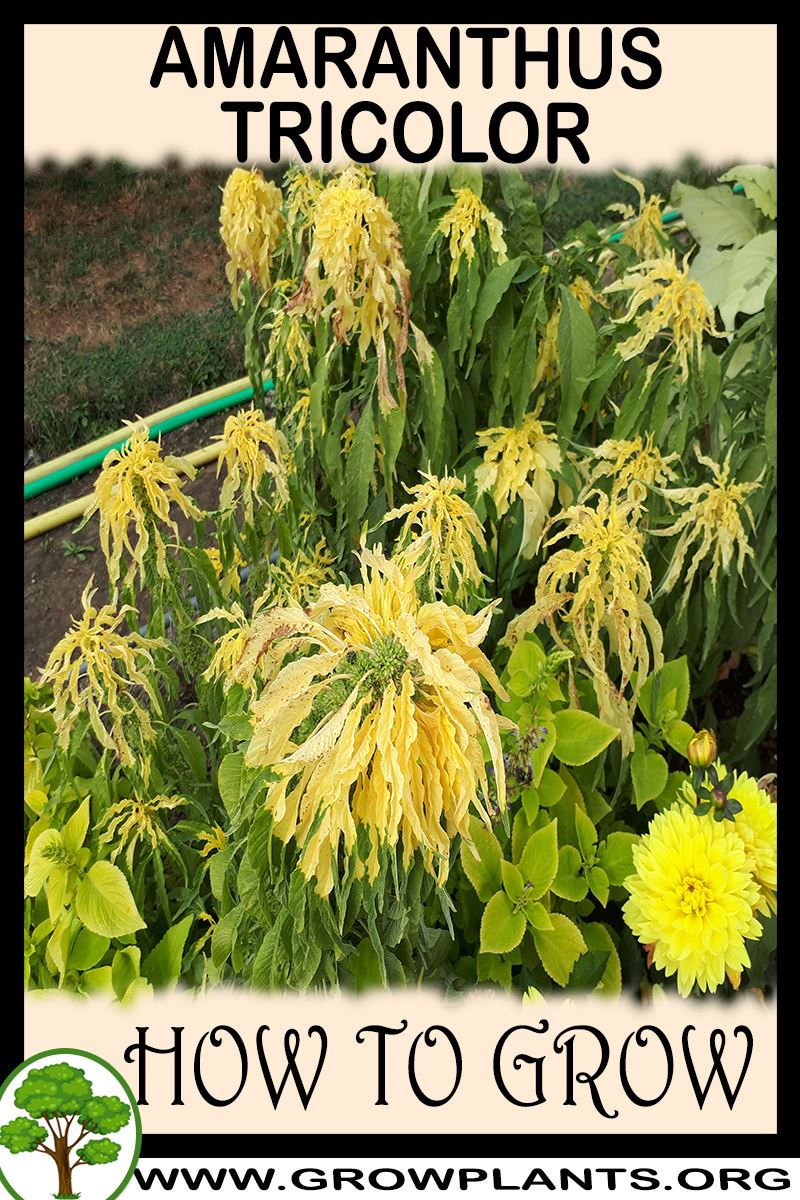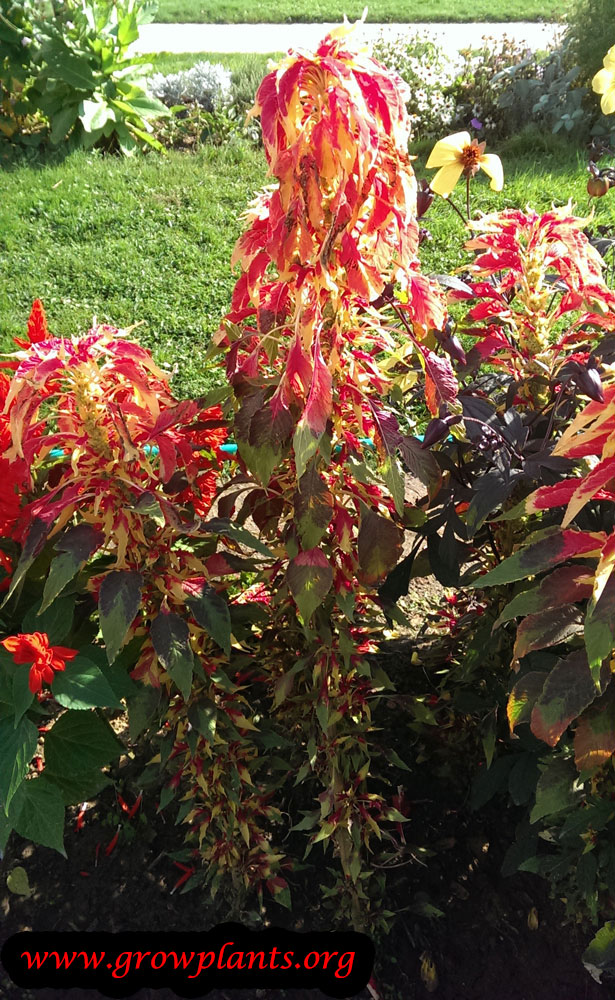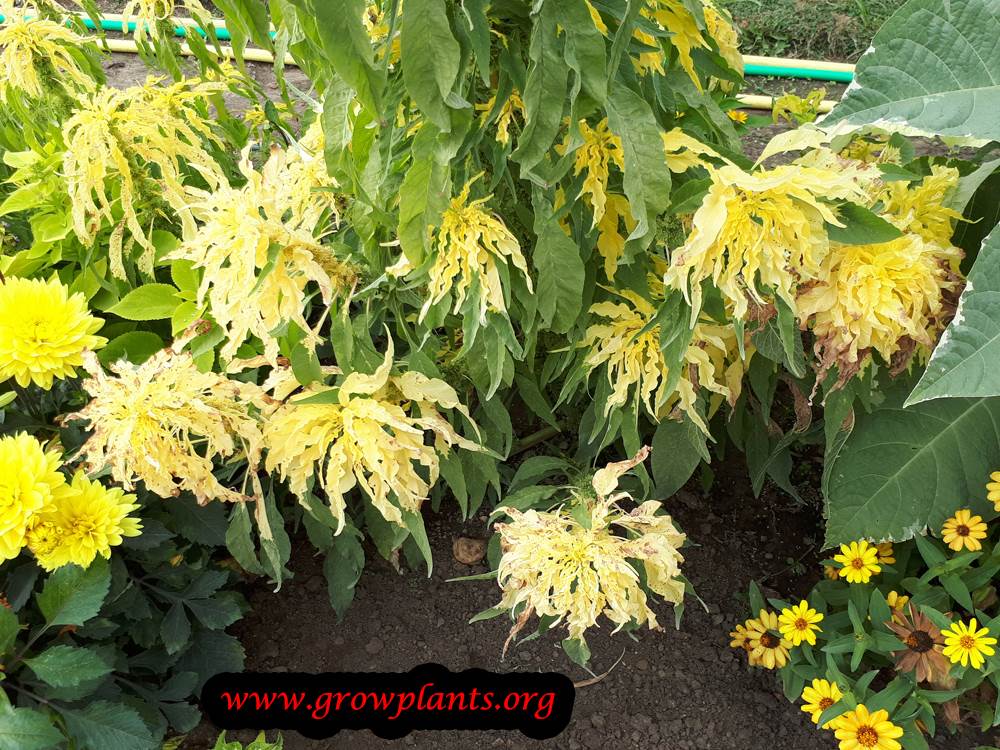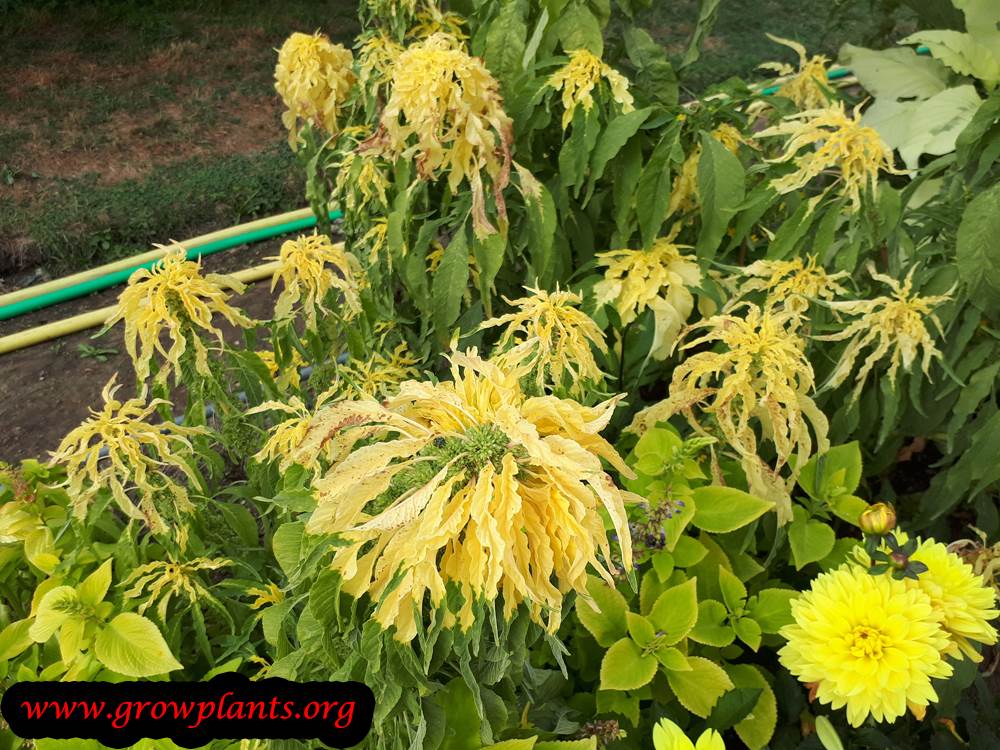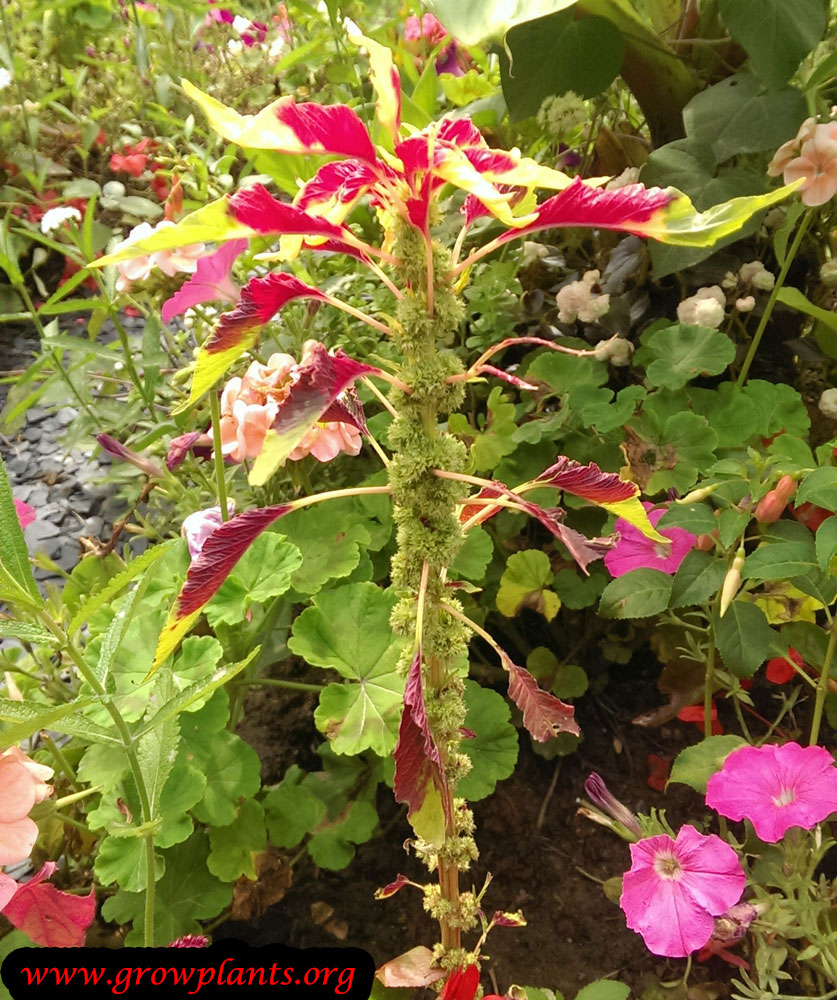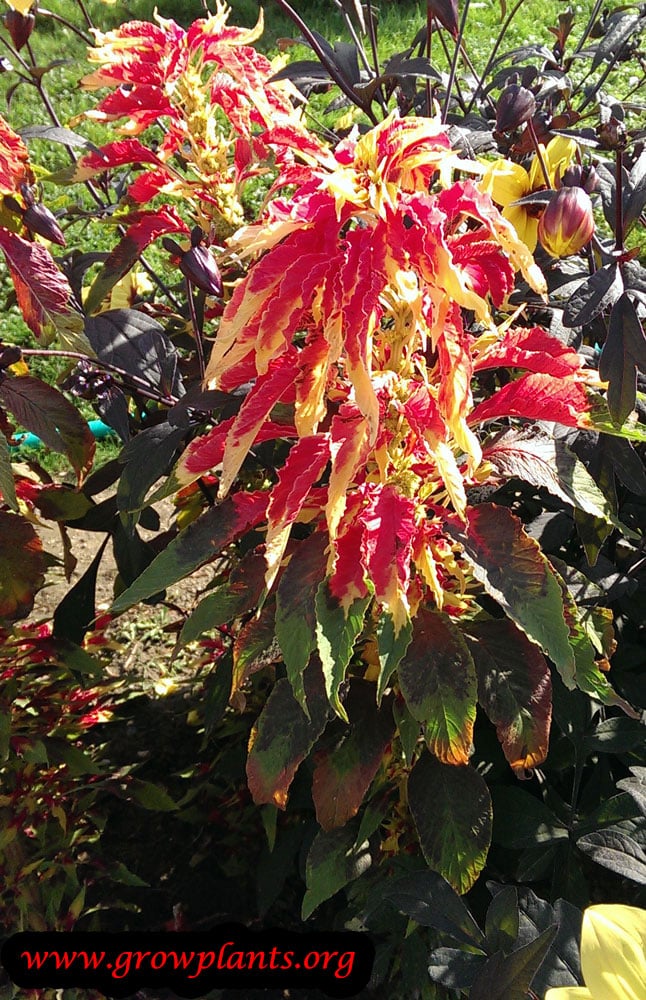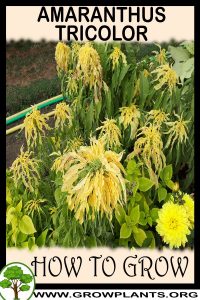
Amaranthus tricolor grow and care – herbaceous of the genus Amaranthus also known as Edible amaranth tricolor or Joseph’s coat plant, Amaranthus tricolor mostly annual plant but can be short life perennial, edible plant but mostly used as ornamental plant, can grow in mediterranean, subtropical, temperate, tropic climate and growing in hardiness zone 2+
Amaranthus tricolor ledible eaves, flowers and seeds
Leaves are edible, color of the leaves can be: orange, yellow, red, purple, blue, pink.
Flower color purple inflorescence grow on stalk, the seeds also edible
Seeds edible in white color, the seeds small and round.
Amaranthus tricolor for sale – Seeds or Plants to Buy
How to grow Amaranthus tricolor growing and care:
Moist, rich soil, mulch, sometimes the plants need support of cane that the plant won’t fall
What is the best way to start growing:
Seedling / Seed (explanation below) / Cutting – cut stem in new growth, if there isn’t growth cut the top of the plant it will induce new growth, after the stem grow cut and put it in moist soil with high humidity care that the soil won’t dry, better not to do it when the plant is bloom and generally not a lot success
Is it necessary to graft or use vegetative reproduction?
No, better to grow from seeds
Difficulties/Problems with growing:
Aggressive, can be invasive
Planting season:
Spring, (in cold area better start growing indoor in the end of the winter than to transfer it outdoor after the last frost), when buy small plant in warm region possible to plant it in the summer
Pests and diseases:
Apids, prodenia, slugs
Pruning season:
Summer / Autumn, possible all year, better after the plant dead or in the spring before the flowers
How to prune:
Recommend to prune the flowers, usually not necessary to prune, but if needed that the plant will be small or more full of stems better to cut in the top of the plant in the spring after the plant establish, care when you prune not too much before flowers.
Size of the plant:
0.4-1 m, 16-40 inches
Growth speed in optimal condition:
Fast growing / Medium growing
Irrigation water management requirement:
Average amount of water
Light conditions in optimal condition for growing:
Full Sun, can be with less than full sun, it will affect the amount of flowers, although better to prune the colored leaves mostly grow next to the flowers
Is it possible to grow indoor as houseplant?
No
Growing is also possible in a pot / planter /flowerpot / containers:
Yes, when grow in container size better to be 5-8 liter (1.5-2 gallon), require average amount of water, it’s to keep the soil moist consider to put mulch and can reduce vaporization of the water, need to take care that the soil well ventilated with good drainage, rich with organic matter, can use in potting mix or peat soil with perlite or vermiculite.
Blooming information
When does flowers bloom?
Summer / Autumn
General information about the flower
Purple small flowers, inflorescence stalk
Thinning the bloom:
Possible to do that If you eat the leaves
Pollination is done by:
Bees
Edible leaves
When to harvest the edible leaves?
Spring, Summer, Autumn / in warm climate better to harvest in spring the leaves young and tender and the plant might bloom in the summer, in colder region better to start to harvest in the late spring after the plant establish until the end of the summer, sometimes possible in the autumn but better to harvest when the plant doesn’t bloom
How to harvest the leaves?
Cut the stems or just leaves from the base, better to cut the leaves when the leaves fully grown and young, the leaves softer and less fibrous
Information about leaves:
Oval, the leaves color can be: orange, yellow, red, purple, blue, pink
Uses of leaves:
Eaten raw, salad, stir fry, cooked
How to grow Amaranthus tricolor from seeds
Sowing requirement:
Rich soil, humidity, sunny location, and hot climate better not too much
Saving seeds until sowing:
Dry and dark location
Sowing season:
Spring after the last frost to early summer in hardiness zone 2-10a, in hardiness zone 10b+ can be planted all the year mostly germinate in spring or autumn but will looks less good in the winter and might won’t grow well
Planting spacing:
20*30cm (8-12 inches)
Depth of Sowing:
1-10mm
Conditions for seeds germinate:
Moist soil, full sun, warm weather
Watering requires for Seeds:
Average amount of water / Big amount of water
Germination time:
2 weeks to 12 month
Condition of seedling:
Water regularly and weed free
Varieties
Amaranthus tricolor perfecta – leaf color green with yellow, red and little black-purple spots
Yellow amaranthus – green with yellow leaves
Amaranthus tricolor red army – red with purple leaves
Amaranthus early splendor – pink leaves with red and dark purple
Amaranthus tricolor illumination – leaves color can be: yellow, orange-red, purple with green
Scientific name:
Amaranthus tricolor
Categories
| Blooming Seasons |
|
|---|---|
| Edible Parts |
|
| Culinary uses |
|
| Flower colors |
|
| Climate |
|
| Harvest Season |
|
| Leaf color |
|
| Ornamental parts |
|
| Plant growing speed |
|
| Plant life-form |
|
| Plant Uses |
|
| Planting Season |
|
| Plants sun exposure |
|
| Watering plants |
|
| Hardiness zone |
|


